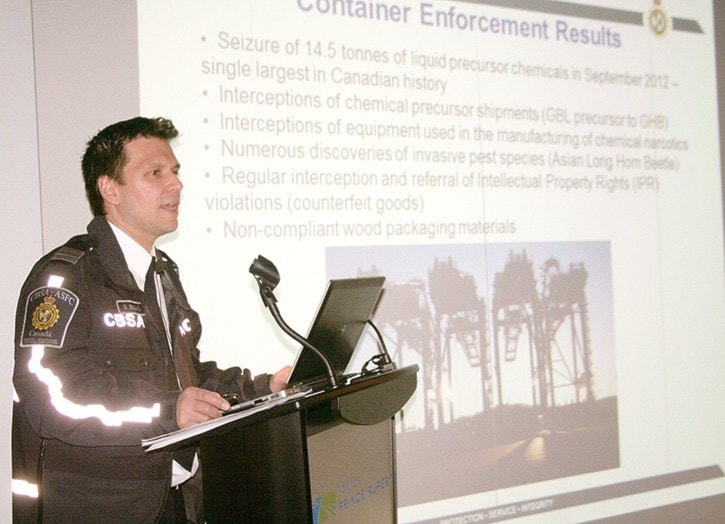The Canada Border Service Agency (CBSA) outlined the step they take to ensure the security of containers entering Prince Rupert during a Trade Talks event on Thursday.
The many ways in which CBSA works within port operations was the topic of the event, the second hosted by the Prince Rupert Port Authority, and the focus was on protocols and methods the agency uses for container inspections.
Dan Bubas, CBSA chief of operations for the West Coast and Yukon District, said the CBSA has three key strategies for managing the boarder.
"We receive vast electronic information on what is coming to Canada. Before the goods have even left we're getting information on what they are and where they're coming from. With that information, we turn it into intelligence and use risk assessment systems," he said.
"Thirdly, we build programs to expedite low-risk training and facilitate business."
Bubas said the CBSA analyzes the risk assessment of 100 per cent of containers heading to Prince Rupert.
"What we're looking for in particular is anything that would be considered a danger to people. We're looking for potential weapons of mass destruction, and acts of terrorism," he said.
"By and large, most freight is low risk."
When containers reach Fairview Terminal in Prince Rupert, radiation levels are tested. Bubas explained the process to those in attendance, overviewing the various methods CBSA officers use to ensure cargo is safe.
If containers are still considered risky, CBSA must destuff containers at the container examination facility. Bubas said more than 2,000 full offload examinations took place last year, which doesn't include other examinations on the dock. This is between one and two per cent of traffic.
"In Prince Rupert by and large virtually all of the traffic is legitimate. We have a very high compliance rate. There's a lot of significant importers who bring freight through here and we've never had a problem," said Bubas.
But not all cargo is clean. In September 2012, CBSA officers in Prince Rupert seized 14.5 tonnes of chemical precursors for GHB, or the date rape drug, and ecstasy, the largest interception in Canada.
In Prince Rupert, CBSA officers have found invasive pest species, like the Asian Longhorn Beetle, in containers.
"We have found live insects in containers, it's not uncommon. The ones we're most concerned about are the wood-boring ones that could affect our corps and tree," Bubas said.
